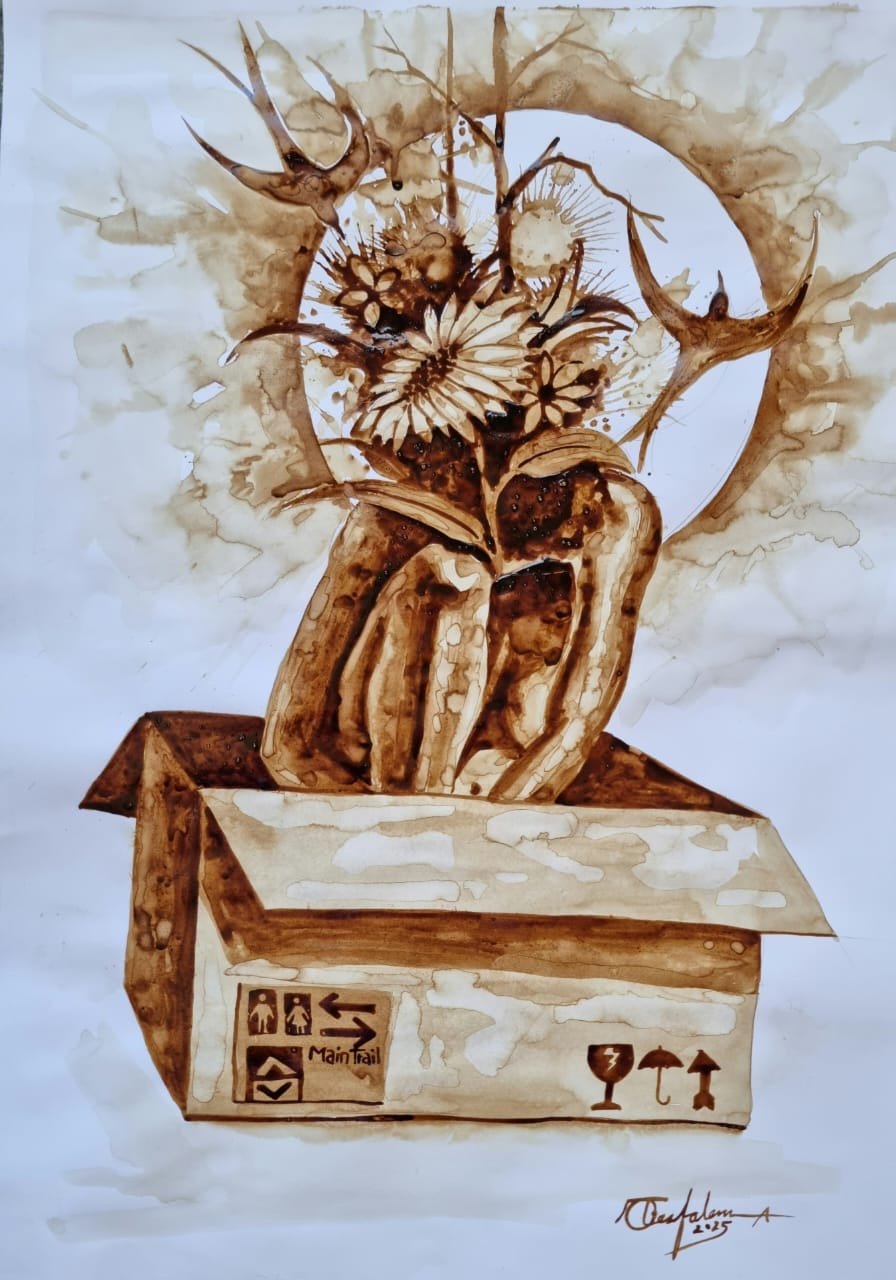Tesfalem Atenaw
For Tesfalem Atenaw, painting was never just a childhood fantasy—it was an undeniable calling. While other children pretended to drive imaginary cars, young Tesfalem instinctively picked up charcoal and sketched on the walls of his home. Born into modest means and raised by a single mother who baked traditional bread to support the family, Tesfalem’s drive to become an artist was rooted in both purpose and passion. He pursued art with fierce determination, rising from obscurity to become one of Eritrea’s most respected and innovative contemporary artists.
Tesfalem’s early path into art school came with an act of courage and humility—he submitted a friend's drawing to secure admission, fearing his own work wasn’t good enough. But once inside, his unique talent was impossible to miss. He gained attention for drawing classmates’ anatomy assignments, leaving his signature at the bottom. Recognition soon followed when he won the Central Region Art Competition in high school. He continued to study fine art at NUEYS while apprenticing with prominent artists Ghide Gebremicael and Ermias Oqbe, both of whom helped refine his technique and vision.
Tesfalem is known for pioneering the coffee painting technique, a discovery born out of an accidental spill that turned into a defining medium. Similarly, his use of ink painting came from a miscommunication and a willingness to experiment. These methods, now integral to his style, have captivated audiences in over 15 exhibitions.
Today, Tesfalem’s works can be found in the Asmara Museum and in private collections around the world. He has exhibited internationally, including in California and the 2025 San Francisco Art Fair, where his coffee and ink paintings were widely praised. His art has been recognized by the European Union, multiple American embassies, and the government of Ecuador, who acknowledged his cultural contributions. He also serves as a graphic designer for Zaer Textile Company, where his designs featuring historical Asmara architecture promote Eritrean heritage through wearable and commercial art.
Beyond his personal career, Tesfalem is deeply committed to giving back. He teaches art to disabled and hearing-impaired children, using visual expression as a vital tool for empowerment and connection. Whether through interior design projects, church murals, or community education, his goal remains the same: to make art accessible and meaningful.
Tesfalem paints what he feels. When working for himself, his art is deeply personal and expressive. When painting for others, he adapts, responding to the needs and emotions of his clients. He doesn’t limit himself to a single style or surface—bed sheets, textured fabrics, paper, or walls become his canvas.
As he reflects on his journey, Tesfalem offers this insight:
“A painter should only paint for the sake of the feelings that float inside themselves. The dream will stop eventually either to be famous or rich. But when you paint for the crazy feeling you have, you will be famous and rich with time—and still be a painter because your dream was never to be either.













